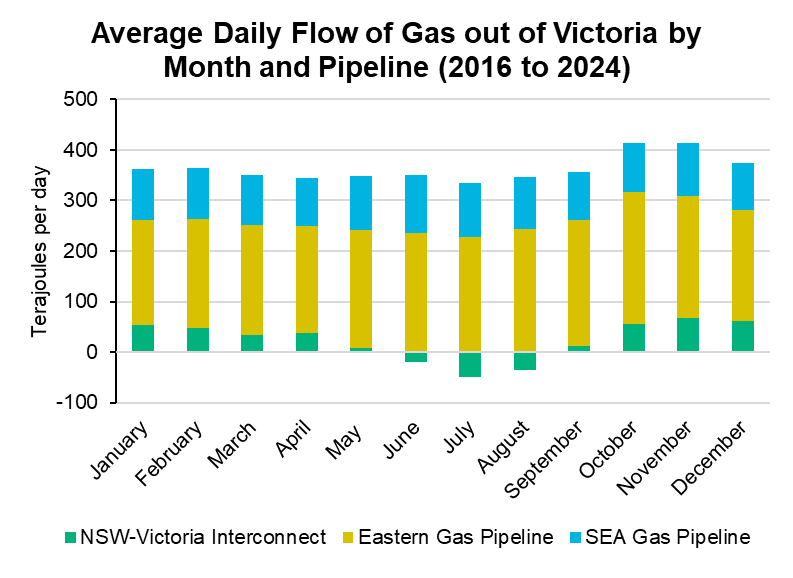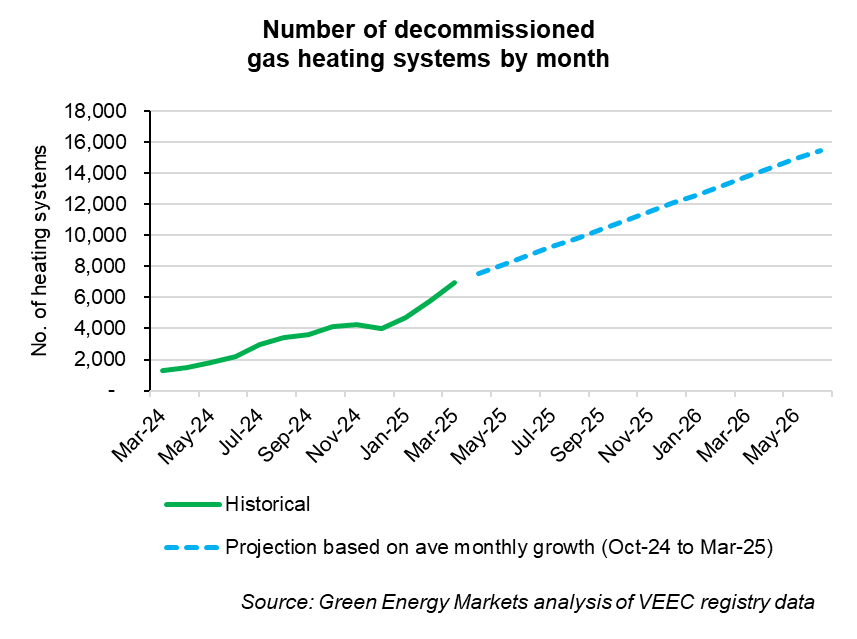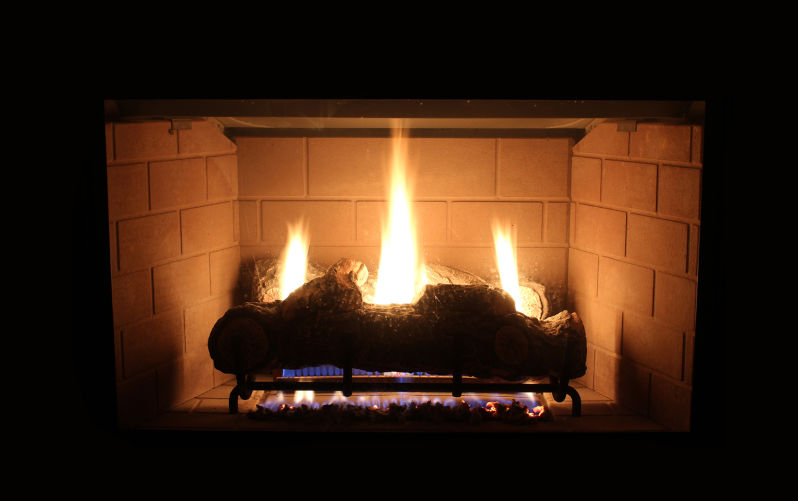Decommissioning rates show gas heating could be gone by 2032, but oil exec bonuses might suffer
June 10, 2025
While Peter Dutton lost the election and with it his plan to force gas exporters to reserve a portion of their gas for domestic Australian consumers, concerns around availability of gas are not going away. According to AEMO, Victoria, NSW and South Australia are on the verge of gas shortages by around 2028 to 2029.
We repeatedly hear from a range of oil and gas executives that the blame for this expected shortage can be squarely laid at the feet of the Victorian government and its “anti-gas” ideology.
Just a few days ago, the Santos’ CEO compared the Victorian Government to that of North Korea. According to these CEOs the one and only answer to forthcoming gas shortages across Victoria, NSW and South Australia is opening up new gas fields. They know there are other viable options to address shortages, but those options will hurt their profits.
Is it possible that these shortages might be due to the gas industry linking Australian gas fields up to a giant vacuum cleaner operating like a firehose in reverse sending gas overseas via Gladstone’s liquefaction plants?
In response to this question you can usually expect their best impersonation of former Queensland Premier Sir Joh’s ‘don’t you worry about that’ routine.
It is interesting to hear how forthcoming shortages are all the Victorian government’s fault for being “anti-gas”, when pipeline flow data from the Australian Energy Regulator clearly shows gas companies have for many years been funnelling copious amounts of Victorian gas northward out of the state.

Sources: Australian Energy Regulator via: 1) www.aer.gov.au/industry/registers/charts/average-daily-flows-sa-demand-region-monthly 2) www.aer.gov.au/industry/registers/charts/average-daily-flows-nswact-demand-region-monthly . Note: the small negative values over winter for the NSW-Victoria Interconnect indicate that pipeline is delivering gas inward to Victoria, all remaining positive values indicate flow out of Victoria.
Yet what exactly does “anti-gas” mean anyway? Is it that the gas industry is being stopped from extracting gas?
There remains a ban on onshore gas extraction via fracking which was imposed by the prior Liberal-National Government. But conventional gas exploration and extraction is not restricted. This isn’t the issue, though, the issue is that the remaining unexploited gas fields left in Victoria are small and involve high extraction costs.
We know it’s expensive to extract because the gas industry themselves have told us so. When prior Liberal leader Peter Dutton announced their plan to restrict gas exports to drive the price of gas down to $10/GJ at the Queensland Wallumbilla hub (equating to almost $13/GJ delivered to Victoria according to EnergyQuest), the gas industry loudly complained that this would make development of new gas fields uneconomic.
The developers of these new fields need prices to be high and for that to happen they need demand for gas from Victorian residential consumers – which represent around a third of Victorian gas demand- to remain high. You see, shortages are unambiguously a good thing if you are a producer of the good that is in short supply.
Gas pipeline owners also desperately need demand from residential consumers to remain high because they provide 93% of gas distribution pipelines’ revenue.
Contrary to the assertions of some, the Victorian government perfectly understands gas plays a fundamentally important role for a number of manufacturing industries that need high temperature heat and steam. They also realise that there are occasions, like when extreme weather events coincide with coal plant breakdowns, when demand for gas in power generation can surge.
So what can they do about this serious problem, given gas producers seem to be intent on funnelling supply northward?
What the Victorian government has come to understand is that unlike a number of manufacturing businesses, most households can readily substitute gas appliances with electric alternatives.
Not only that, because electric heat-pump air and water heaters are vastly more energy-efficient than the gas alternatives, households would be financially better off switching to electric once their existing gas appliance is close to its end of life.
New data emerging from the Victorian Energy Upgrades program suggests that we could get Victorian households weaned off central gas heaters in less than 10 years. According to the Residential Energy Baseline Study this would free up around 67 petajoules of gas per annum, which is 20% more gas than currently consumed by all of Victoria’s manufacturing facilities.
Unnoticed by many media commentators, there are now a multitude of companies offering to replace Victorian households’ gas heaters with reverse-cycle air conditioners. This has been induced by incentives provided by the government’s Victorian Energy Upgrades program which requires the gas heater to be permanently decommissioned in return for a rebate on the air conditioners.
The chart below illustrates in the green line the number of gas heaters (almost all gas central ducted systems) that have been decommissioned under the VEU program per month since March 2024 up until March 2025.
Twelve months ago the number of gas systems being decommissioned per month was modest but it has grown steadily, and over the past 6 months the number of gas systems being replaced has grown on average by 565 systems per month to reach almost 7,000 decommissioned and replaced systems in March this year.
If we just kept at this rate in March it would take us another 15 years to replace the 1.27 million central gas heaters estimated in Victorian homes according to the Australian governments’ 2021 Residential Energy Baseline Study.

But what if we simply maintained the past 6 months of average monthly growth in decommissioning rates -an increase of 565 systems per month?
This is shown in the dashed blue line of the chart above. If this was sustained until the end of the coming 2025-26 financial year, then by June 2026 we’d have reached 15,500 gas systems being replaced in that month. Such a level of monthly gas replacements would then be sufficient, without any further growth, to replace the entire existing stock of Victorian gas ducted central heaters by around mid 2032.
We point this out not so much to suggest that this is likely to happen but rather to illustrate that it could be done and could be done with relatively little technical difficulty.
The reality is that the residential electrical appliance and electrical trades industry have shown time and time again that they can scale up at a speed equal to, or superior to large energy producers on the supply-side. They’ve done it with solar PV and they can do it with replacing gas heaters with air conditioners.
Unfortunately, while we have the capability to rapidly replace gas heaters with efficient electric appliances, current policy settings aren’t going to be enough. The target for the Victorian Energy Upgrades scheme will be reduced next year and that is likely to lead to a fall away in gas replacement rates under the program.
The other issue is that we ultimately need to be replacing gas in rental properties and landlords have historically shown extremely little interest in making investments that help their tenants reduce their energy bills.
That’s why it will be vitally important that the Victorian government follow-through on its policy proposal to require residential gas heaters to be replaced by efficient electric alternatives at their end of life.
This can work in concert with an enhanced Victorian Energy Upgrades (VEU) program which will help drive replacement in advance of gas appliances wearing out, and also take the financial sting out of regulatory mandates.
An enhanced VEU could also provide incentives to encourage power demand reductions in peak-periods so that the increase in the number of air conditioners could be accommodated with minimal increases in network capacity.
Some might want to label this as an anti-gas ideological crusade. Yet the alternative involves leaving energy consumers to the mercy of oil and gas executives. Those executives have shown about the same kind of mercy to consumers as a pack of hungry hyenas towards limping prey.
Republished from Renew Economy, 7 June 2025
The views expressed in this article may or may not reflect those of Pearls and Irritations.
